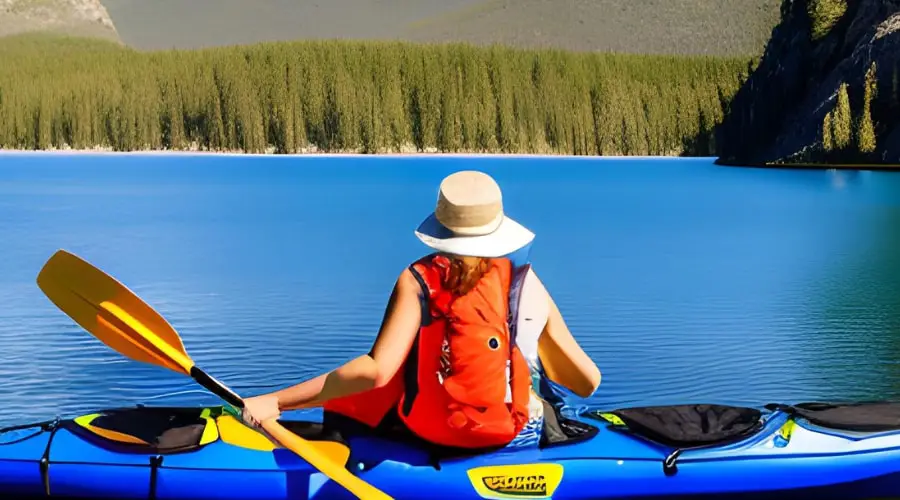Embarking on a kayak camping adventure is an exciting way to explore nature while getting some exercise. But before you hit the water, you need to know how to pack your kayak efficiently and safely. In this guide, we’ll walk you through the process, ensuring you have everything you need for a successful trip.

Preparing Your Kayak
Choosing the right kayak
The first step is selecting the appropriate kayak for your adventure. Consider the type of water you’ll be navigating, the length of your trip, and your experience level. Touring or sea kayaks are ideal for longer trips, while recreational kayaks work well for shorter excursions.
Inspecting your kayak
Before packing, inspect your kayak for any damage, leaks, or loose parts. Make sure the hatches are watertight and the rudder or skeg is functioning properly. Address any issues before setting off.
Packing Your Kayak
Dry bags
Invest in quality dry bags to keep your gear dry and organized. Use different colors and sizes to easily identify the contents of each bag.
Packing zones
Kayaks typically have three packing zones: the bow, the cockpit, and the stern. Pack heavy items in the bow and stern, lighter items in the cockpit, and frequently used items within easy reach.
Weight distribution
Distribute weight evenly across your kayak to maintain stability. Avoid overloading one side or the other, and keep the center of gravity low.
Essential Gear
Personal flotation device (PFD)
Always wear a properly fitted PFD while on the water. Choose one with ample pockets for storing small essentials like a whistle, knife, and sunscreen.
Paddle
Select a paddle that suits your size, strength, and paddling style. Don’t forget a spare paddle, just in case.
Safety gear
Pack a bilge pump, paddle float, and towline to handle emergencies. Additionally, carry a first aid kit and signaling devices like a flashlight and flares.
Navigation tools
Bring a map, compass, and GPS device to help you stay on track. Waterproof cases are essential for protecting electronics.
Camping Equipment
Shelter
Choose a lightweight, compact tent or tarp to save space. Ensure it’s suitable for the weather conditions you expect to encounter.
Sleeping system
Pack a lightweight sleeping pad and sleeping bag rated for the expected temperatures. A compact camping pillow can also improve your comfort during the night.
Cooking equipment
Select a small camp stove and fuel source that suits your needs. Bring lightweight cookware, utensils, and a portable water filter or purification system.
Food and water
Plan your meals in advance and pack non-perishable, lightweight food items. Dehydrated meals, energy bars, and trail mix are popular options. Carry enough water for your journey, and be aware of water sources along your route.
Clothing and Personal Items
Dress in layers to adapt to changing weather conditions. Pack quick-drying, moisture-wicking clothing, including a waterproof jacket, pants, and footwear. Don’t forget essentials like a hat, sunglasses, and extra socks. Keep personal hygiene items, such as a toothbrush, toothpaste, and biodegradable soap, in a separate dry bag.
Leaving No Trace
Respect the environment by adhering to Leave No Trace principles. Pack out all trash, minimize your impact on campsites, and properly dispose of human waste.
Related: How to Pack a Sea Kayak for Camping
Frequently Asked Questions:
How do I choose the right kayak for my camping trip?
Consider factors like the type of water, trip duration, and your experience level when selecting a kayak. Touring or sea kayaks are better for longer trips, while recreational kayaks are suitable for shorter outings.
What is the best way to pack my kayak for stability?
Distribute weight evenly across your kayak, keeping the heaviest items low in the bow and stern. Balance the load on both sides to maintain stability.
How can I keep my gear dry while kayaking?
Use quality dry bags in various sizes and colors to organize and protect your belongings. Make sure hatches are watertight and closed securely.
What essential safety gear should I carry on a kayak camping trip?
Pack a bilge pump, paddle float, towline, first aid kit, and signaling devices like a flashlight and flares. Always wear a properly fitted personal flotation device (PFD).
How much water should I bring on my kayak camping trip?
The amount of water you need depends on the length of your trip, your activity level, and the availability of water sources along your route. As a general rule, plan for at least one gallon of water per person per day.
Conclusion
Properly packing your kayak is essential for a safe and enjoyable camping trip. By following these guidelines, you’ll be well-equipped for your adventure, and you’ll be able to focus on the beauty of nature around you. Happy paddling!
